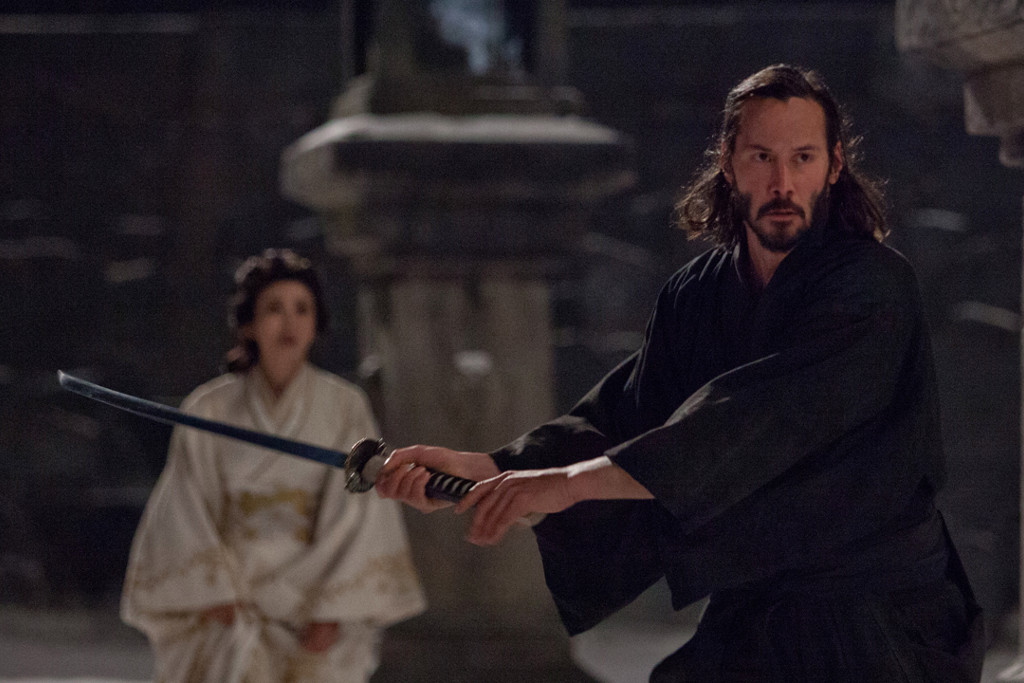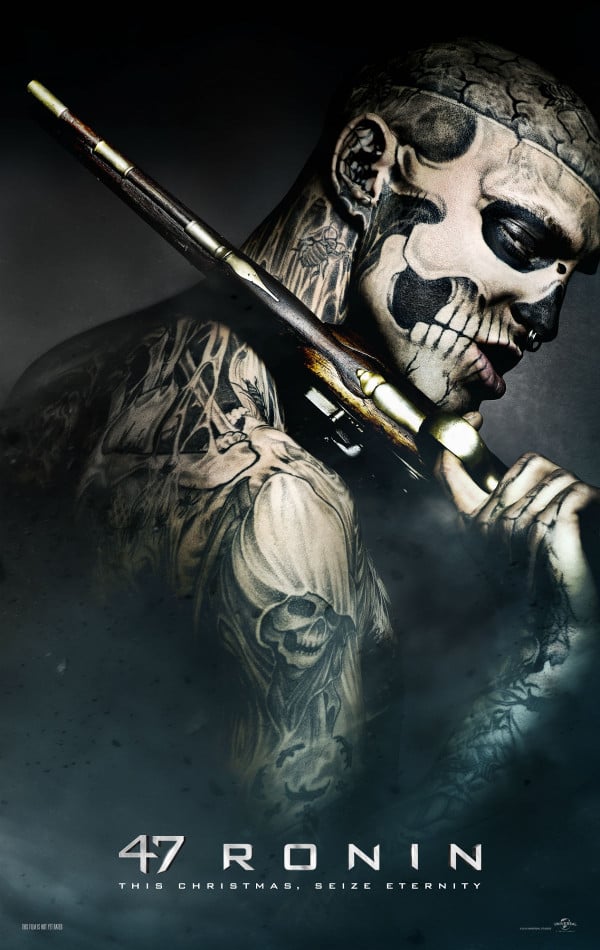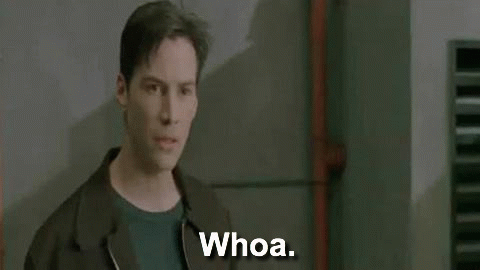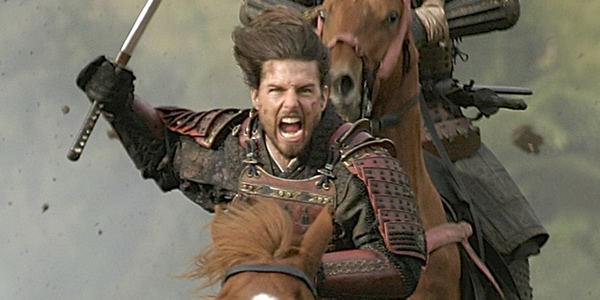Why 47 Ronin Is The Year’s First Box-Office Disaster
And it's not even Keanu Reeves's fault.

A sadly misconceived fusion of Japanese legend with American blockbuster filmmaking, 47 Ronin is a film labouring under an identity crisis. With its $175 million budget, and the $120-ish million loss it looks to represent for its studio (Universal), it seems set to swiftly join the ranks of John Carter and R.I.P.D. as one of Hollywood’s recent mega-budgeted flops.
–
Chūshingura
The legend of the ’47 Ronin’ has enough status in Japanese culture to have earned its own special title. Literary adaptions are called Chūshingura (or ‘The Treasury of Loyal Retainers’), and are prized for their representations of loyalty, honour, and the bushido samurai code.
The tale relates the fate of 47 samurai who, in the wake of their master Lord Asano’s enforced suicide by seppuku — punishment for assaulting an official of the Edo shogunate — spent a year biding their time and suffering the indignities of being masterless, before banding back together to revenge their Lord, assaulting the official’s house, and beheading him.
Although their revenge was recognised to be in accordance with the samurai’s code, they were sentenced to death. However, punishment by execution was waived in favour of allowing them to all commit seppuku together.
The new 47 Ronin, directed by Carl Rinsch, adds a whole lot of embellishments to this. None of them are particularly worthwhile, beginning with the inclusion of Keanu Reeves as Kai, a half-Japanese half-English foundling whom Asano welcomes into his household, and who has a chaste romance with Asano’s daughter. Kai represents a fairly blatant excuse to insert a Caucasian actor into the proceedings.
In this version, the enemy and cause of Asano’s death, Kira, is now lord of a neighboring province, who lusts after a) Asano’s lands, and b) Asano’s daughter. He is also pals with a shape-shifting witch, who seems to enjoy a) concocting evil schemes with Asano for no particularly good reason, and b) turning into a dragon, also for no particularly good reason.
The film works best when it manages to ignore all this junk and behave like a real samurai epic. Contrary to what the marketing might have you believe, Reeves is actually a co-lead in this film. The leader of the ronin, Oishi, is played by charismatic actor Hiroyuki Sanada (the mutant-phobic, murderous father in last year’s The Wolverine), who effortlessly projects the reserved, principled determination that is natural to all samurai heroes.
Revenge narratives make a pretty strong, durable spine for any film, really. When the movie focuses on Oishi and the mission of the 47 ronin proper, and strays away from the romance and magic and witches, it actually proceeds almost smoothly.
Unfortunately, the film’s identity crisis keeps rearing its head. Variety’s post-mortem on the film’s flopping describes a production beset by conflicting interests. Novice director Carl Rinsch apparently aimed for a more traditionally serious samurai film, and had difficulty accommodating the mainstream goals of the studio. Dialogue had to be re-written and simplified so that the mostly Japanese cast could learn it phonetically. After executives saw a test cut way back in 2011, there were reports that Rinsch was locked out of the post-production process for a time, as multiple editors cut different versions of the film.
A significant part of the marketing revolves around a crazily tattooed guy called Savage (played by actual crazily tattooed guy Rick Genest). He even gets his own poster. But he’s in the film for all of ten seconds and does nothing. The film is full of truncated elements like this. Sub-plots meander along feeling half-realised, like fossils of old drafts of the script.
–
Keanu Reeves, thespian.
Please bear with me now for a brief digression on the gifts of Keanu Charles Reeves, actor. Reeves cops a lot of flak for being a bad actor, or perhaps an extremely wooden one, but I’m going to propose to you that he is much under-appreciated. True, he has difficulty giving a convincing line reading, and, yes, his repertoire of emotions scarcely approaches double digits, but under the right circumstances this doesn’t even matter.
Reeves works best when he isn’t required to build a character from the ground up. When his job is just doing something onscreen — running, fighting, shifting his gaze, moving his body in partnership with the camera, or just being still — he has a neatness and clarity that other actors lack.
His best role is still probably 1999’s The Matrix. The Wachowskis seem to know how to use Reeves perfectly. Moment to moment, his every movement, blink, stare, and utterance seem perfectly articulated, like a comic book frame come to life. Which is to say, he looks totally comfortable executing the formal bows and poses required of a Japanese-set historical film. It’s hard to think of any other Western star who would look less ridiculous wielding a samurai sword (cough cough, Tom Cruise).
–
Racebending and the future of blockbusters
The blockbuster business model has increasingly elbowed mid-budget movies out of the marketplace. Studios now rely on enormous, billion-dollar earning films for a substantial portion of their business. But these enormous movies require enormous, hundred million dollar budgets, which in turn demand greater earning potential.
47 Ronin looks like a fairly self-conscious attempt to capture the Japanese theatrical market, which is now the third largest in the world, after North America and China. But American films have a pretty inconsistent record of finding success with Asian audiences, especially when they’re deliberately crafted to appeal. Ronin seems sure to be an enormous flop. Off of that huge $175 million budget, it earned a paltry $3-ish million in Japan.
When Memoirs Of A Geisha was adapted in 2005, it was cast with Chinese stars like Zhang Ziyi and Gong Li, presumably to appeal to a pan-Asian audience. But the resulting controversy caused offense in Japan, and saw the film banned in China. Critics now call this ‘racebending‘, after the casting of lily-white Caucasians as Asian-inspired characters in The Last Airbender cartoon adaptation.
But this kind of racially dismissive casting is only the idiotic extreme of a tendency that seems likely to continue, as the financial opportunities in Asian and international markets grows increasingly necessary to the stability of American blockbuster filmmaking.
Reeves’ Kai isn’t an especially egregious instance of racebending, which is mostly thanks to the actor’s screen presence. But he’s still the fulcrum of the film’s identity crisis: a child caught between two cultures, a film caught between two audiences. Japanese audiences can’t be blamed for rejecting an ersatz version of a key national legend, just as Western audiences probably, on the whole, prefer not to be pandered to with the Anglicisation of a Japanese story.
47 Ronin is a film for nobody, made by committee. Like its samurai, it is masterless.
–
47 Ronin is now showing in cinemas nationally.
–
James Robert Douglas is a freelance writer and critic in Melbourne. His work has been found in The Big Issue, Meanland, Screen Machine, and the Meanjin blog. He tweets from@anthroJRD


